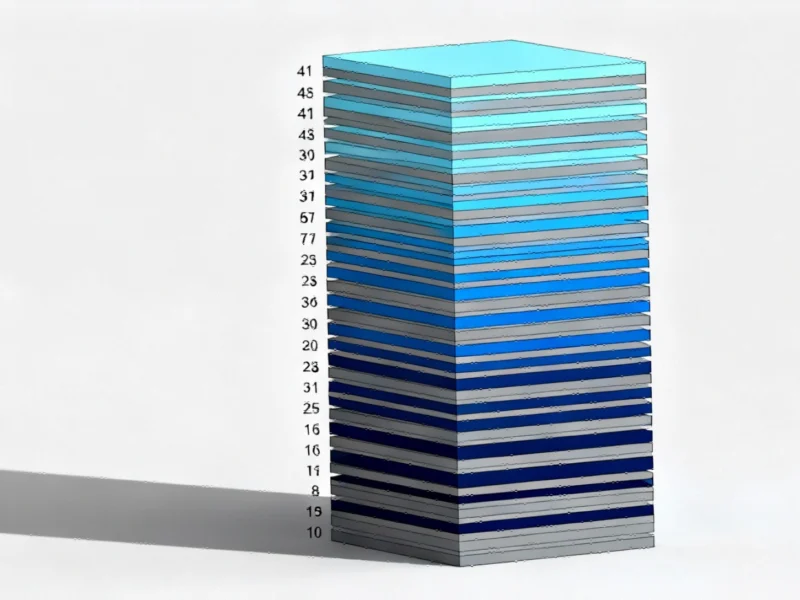Breaking the Two-Dimensional Barrier
As chip manufacturers approach physical limits of miniaturization, researchers have demonstrated a revolutionary approach: building upward rather than shrinking components further. According to reports from the King Abdullah University of Science and Technology, a team led by Xiaohang Li has developed a record-breaking chip with 41 vertical layers of semiconductors, creating a transistor stack approximately 10 times taller than any previously manufactured.
The innovation represents a significant departure from traditional chip design principles that have dominated the industry for decades. Since the 1960s, electronics advancement has largely followed Moore’s law, which predicted the doubling of components on microchips annually. However, sources indicate this trend began faltering around 2010, prompting researchers to explore alternative approaches to increasing computing power.
Manufacturing and Performance Breakthroughs
The research team reportedly manufactured 600 copies of their innovative chip design, with all units demonstrating reliably similar performance. Analysts suggest this consistency indicates the manufacturing process is sufficiently mature for potential commercial application. The stacked chips were used to implement various basic operations required by computers and sensing devices, performing comparably to traditional non-stacked chips according to the research findings.
Team member Thomas Anthopoulos from the University of Manchester noted that manufacturing these vertical stacks required less power-intensive methods compared to standard chip production. This efficiency could potentially decrease the carbon footprint of the computing industry while offering enhanced functionality with each additional layer.
Sustainability and Practical Applications
Researchers suggest the technology may not necessarily lead to new supercomputers but could revolutionize commonplace devices. The report states that if implemented in smart household electronics and wearable health devices, the vertical architecture could provide more sustainable electronics manufacturing while maintaining performance standards.
According to the analysis published in Nature Electronics, the manufacturing process for these multi-layer chips demonstrates significant energy efficiency advantages. This comes at a time when the industry faces increasing pressure to reduce its environmental impact, similar to sustainability concerns highlighted in recent environmental technology reports.
Technical Challenges and Future Potential
Despite the breakthrough, engineering challenges remain, particularly regarding thermal management. Muhammad Alam at Purdue University compared the heat issue to “trying to stay cool while wearing several parkas at once,” noting that each additional layer contributes to thermal buildup. Sources indicate the current heat limit of 50°C needs to increase by approximately 30 degrees to make the technology practical for applications outside laboratory settings.
Nevertheless, analysts suggest that vertical growth may represent the only viable path forward for near-term electronics advancement. When asked about scalability, researchers expressed confidence that the approach has virtually unlimited potential upward expansion. “There is really no stopping. We can keep doing it. It’s just a matter of sweat and tears,” Anthopoulos stated in the report.
Industry Implications
The development comes as the semiconductor industry explores multiple avenues for continued progress beyond traditional scaling. The fundamental transistor architecture that has powered computing for decades is being reimagined through three-dimensional approaches. Researchers at KAUST, including lead researcher Xiaohang Li, have positioned this technology as potentially complementary to other emerging approaches rather than as a replacement for existing manufacturing methods.
This architectural shift in chip design represents a significant departure from conventional thinking, similar to how other industries are experiencing fundamental changes, as seen in recent financial sector analyses and budget policy previews. The research demonstrates that sometimes the solution to forward progress involves changing direction entirely – in this case, literally building upward rather than continuing to shrink components.
This article aggregates information from publicly available sources. All trademarks and copyrights belong to their respective owners.



